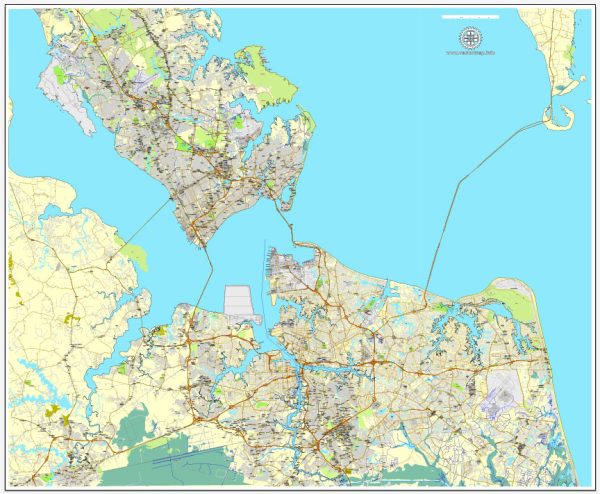The cities of Hampton, Newport News, Norfolk, Chesapeake, Portsmouth, and Virginia Beach, located in the Hampton Roads region of Virginia, have a rich history of urban development that is closely tied to the broader history of the United States. Here’s an overview of the urban development in these cities, with a focus on key historical periods:
- Colonial Era (1607-1775):
- The area was first settled by English colonists in the early 17th century. Hampton, one of the oldest continuous English-speaking settlements in the United States, was established in 1610.
- Norfolk, with its deep natural harbor, became a prominent port city during this period, facilitating trade and commerce.
- American Revolution (1775-1783):
- The region played a significant role during the American Revolution, with several strategic battles fought in the vicinity, including the Battle of Hampton.
- Antebellum and Civil War (1800-1865):
- Norfolk and Portsmouth were important naval and military centers, and their development was influenced by the presence of shipyards and military installations.
- The region was heavily impacted by the Civil War, witnessing the Battle of Hampton Roads in 1862, featuring the famous naval duel between the ironclads USS Monitor and CSS Virginia.
- Reconstruction and Industrialization (1865-1900):
- Following the Civil War, the area underwent reconstruction. Newport News emerged as a significant shipbuilding and industrial center, driven by the Newport News Shipbuilding and Dry Dock Company.
- Norfolk continued to thrive as a major port, and its role in naval operations expanded.
- 20th Century Urban Growth (1900-1950):
- The development of the automobile and improvements in transportation infrastructure influenced the growth of suburban areas.
- Norfolk became a major military hub during World War I and World War II, further impacting urban development.
- Post-World War II Era (1950-1970):
- The post-war period witnessed suburbanization and the growth of residential communities, especially in Virginia Beach and Chesapeake.
- Military presence remained significant, with the region hosting various military bases.
- Late 20th Century to Present (1970-2022):
- Economic diversification and the expansion of the tourism industry, particularly in Virginia Beach, played a role in the region’s development.
- Urban renewal projects in downtown areas aimed to revitalize and modernize city centers.
- Military Influence:
- The presence of military installations, including Naval Station Norfolk, has been a consistent factor shaping the urban landscape and contributing to the area’s economy.
- Transportation and Infrastructure:
- The region’s development has been influenced by its location as a major transportation hub, with the Chesapeake Bay, railroads, and highways playing crucial roles.
- Contemporary Challenges and Opportunities:
- Today, these cities face challenges and opportunities related to infrastructure development, economic diversification, sea-level rise, and urban planning.
The history of urban development in these cities reflects the broader historical trends of the United States, including colonial settlement, industrialization, military influence, and suburbanization. The interconnectedness of these cities in the Hampton Roads region has contributed to their shared history and ongoing development.


 Author: Kirill Shrayber, Ph.D.
Author: Kirill Shrayber, Ph.D.